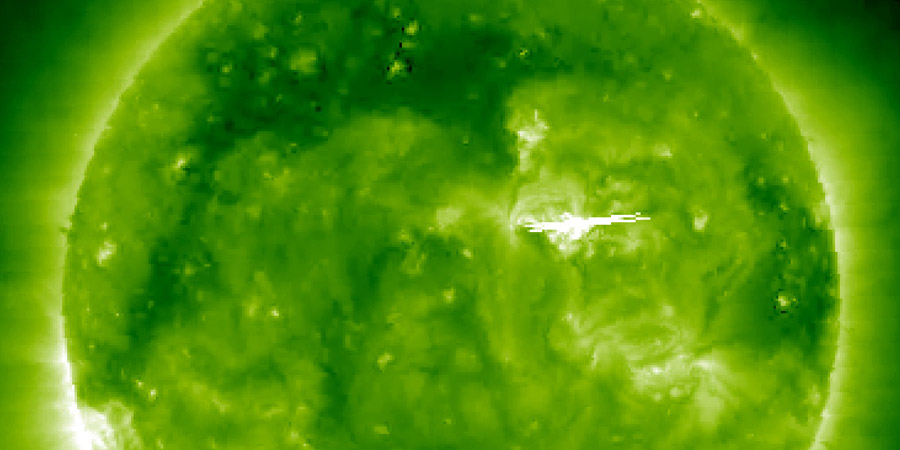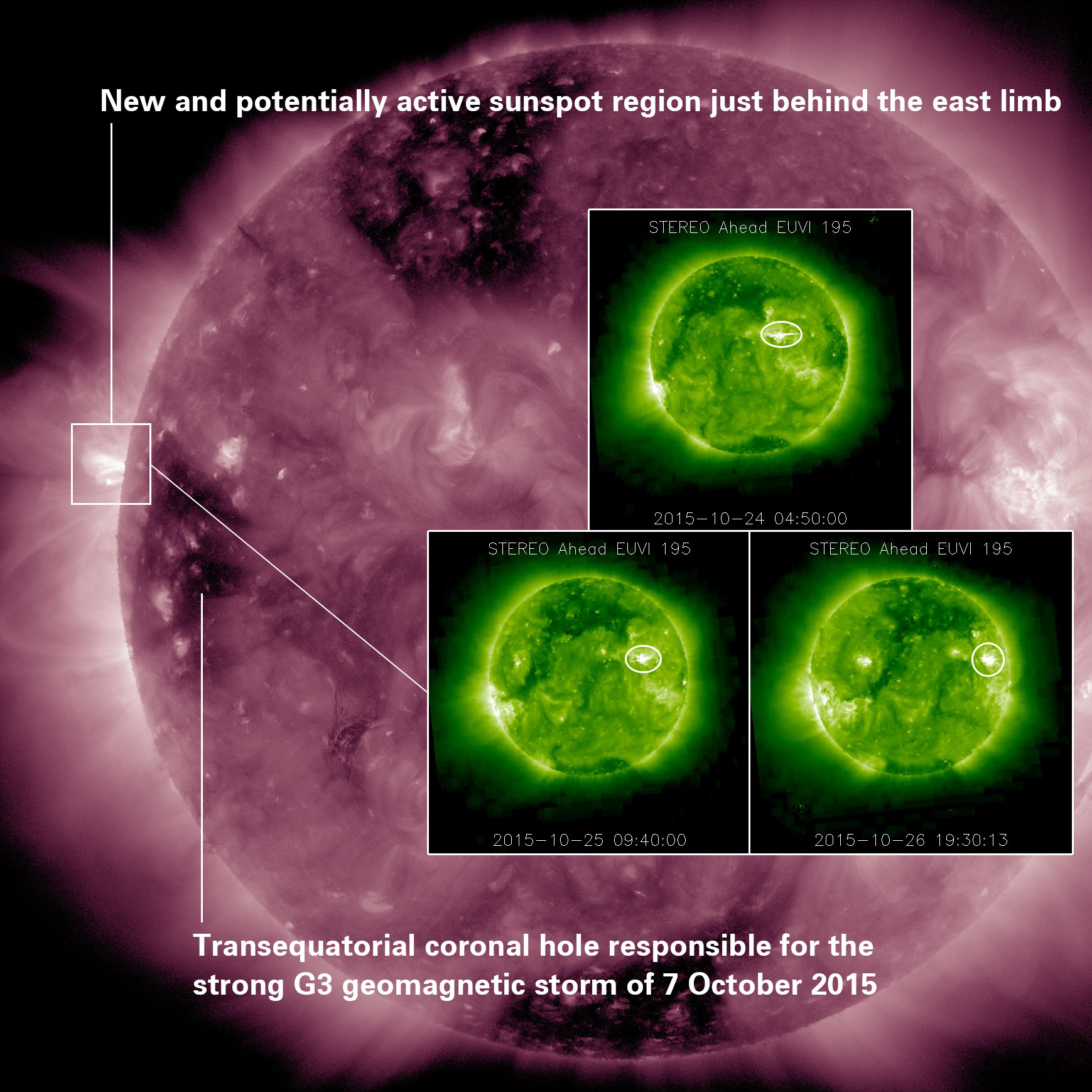New active sunspot region? Coronal hole returns
Tuesday, 27 October 2015 15:21 UTC

There isn't a whole lot going on right now when it comes to space weather. Solar activity is at low levels and the Kp-index hasn't been above 1 during the past 36 hours. Maybe the future brings us some more activity?
The answer to that is: yes! Let us demonstrate that with this creative compilation:

What you are looking at is the Sun as it is right now in the 211 Ångström wavelength as seen by the NASA Solar Dynamics Observatory and within that we added three images from STEREO Ahead which watches the far side of the Sun. STEREO Ahead reveals that an active region has formed on the far side of the Sun which seems to be pretty active. Both on the 24th, 25th and the 26th of October (see the 3 images) we see distinct flashes which are likely solar flares that reached the M-class. We see the coronal loops above this sunspot region on SDO right now so in a few days from now we will likely see the first sunspots of this sunspot region on the earth-facing solar disk.
That was one solar feature we are very interested in right now. Another solar feature we are very excited about is the return of a large transequatorial coronal hole. This coronal hole was responsible for the strong G3 geomagnetic storm on 7 October 2015. We are sure that many of our visitors remember this event very well. Weak aurorae were even spotted from the Netherlands that evening! This coronal hole is now on the east limb so it will still take a while before it faces Earth but somewhere during the end of next week we should be in for another round of great aurora displays.
Thank you for reading this article! Did you have any trouble with the technical terms used in this article? Our help section is the place to be where you can find in-depth articles, a FAQ and a list with common abbreviations. Still puzzled? Just post on our forum where we will help you the best we can!
Latest news
Latest forum messages
Support SpaceWeatherLive.com!
A lot of people come to SpaceWeatherLive to follow the Solar activity or if there is a chance to see the aurora, but with more traffic comes higher costs to keep the servers online. If you like SpaceWeatherLive and want to support the project you can choose a subscription for an ad-free site or consider a donation. With your help we can keep SpaceWeatherLive online!
Space weather facts
| Last X-flare | 2025/06/19 | X1.9 |
| Last M-flare | 2025/10/03 | M1.2 |
| Last geomagnetic storm | 2025/10/03 | Kp5 (G1) |
| Spotless days | |
|---|---|
| Last spotless day | 2022/06/08 |
| Monthly mean Sunspot Number | |
|---|---|
| September 2025 | 129.8 -3.7 |
| October 2025 | 140.1 +10.3 |
| Last 30 days | 131.3 -1.2 |





